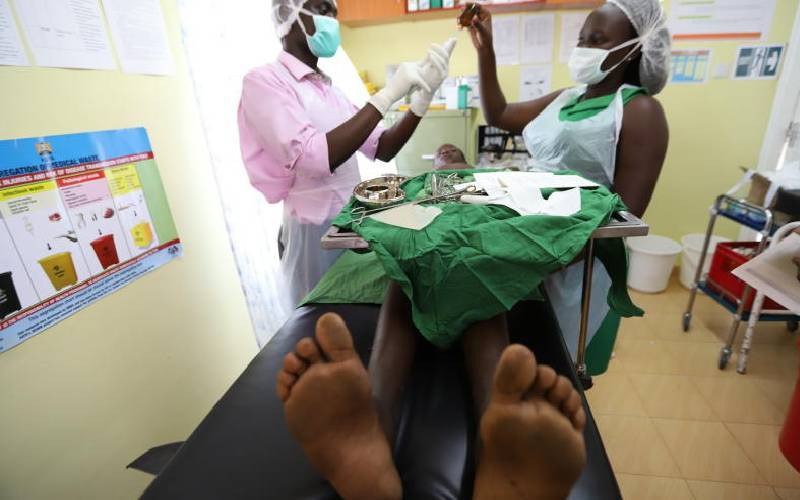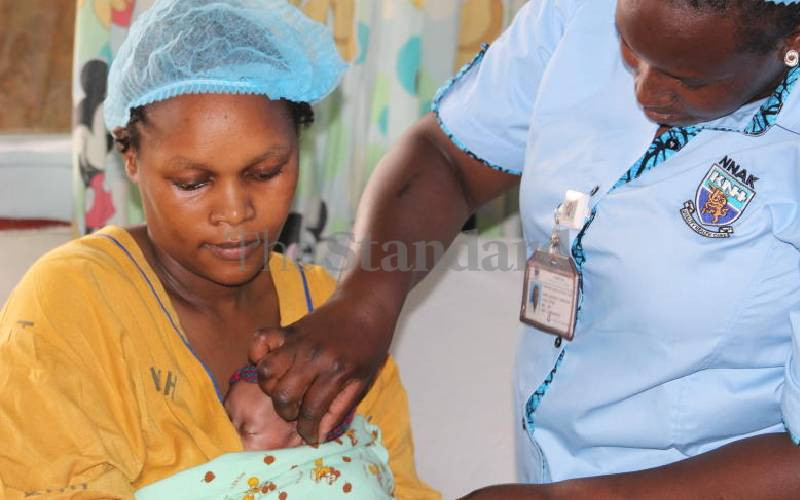Kenyans are becoming more exposed to dangerous injection-handling practices due to negligence and poorly trained and supervised health workers, researchers have said.
The latest warning comes from Garissa General Hospital where clinicians have been found to be exposing patients and themselves to dangerous injection-handling practices. Researchers from the University of Nairobi led by Judith Mwau say although clinical workers at the hospital have the necessary knowledge on how to handle injections, they are not applying it when treating patients.
Reporting their findings in the recent issue of the East African Medical Journal, the researchers tell of widespread and unnecessary prescription of injections at the institution.
“Risky practices such as recapping used syringes, re-use of disposable syringes and overfilling of sharp boxes were observed,” says the study. The team also found the administration of injectable drugs was not standard and varied from one department to the other. But the abuse of injections by health workers is a widespread practice. The Kenya Aids Indicator Survey, 2012, carried out by the Ministry of Health and released last year indicated a significant number of Kenyans are getting HIV infections from contaminated medical injections.
New doctors
“In 2008, it was estimated that 2.2 per cent of new HIV infections in Kenya were a result of unsafe injections received in health facilities,” said a special supplement appearing in the Journal of Acquired Immune Deficiency Syndromes.
A study by the Ministry of Health, Kenyan Medical Research Institute and Oxford University found poor handling of injections and overall surgical procedures in most of 22 teaching and referral facilities.
Published in October last year in the journal Tropical Medicine & International Health, the study said the quality of care in public hospitals is unacceptable and a sorry training ground for new doctors.
The study concluded that poor leadership in public hospitals and inexperienced workers are the major causes of declining quality of medical care in public facilities. The survey covered 22 level four and five hospitals spread across all counties. They were largely found to ignore simple treatment protocols that are clearly spelt out in State policy.
In yet another damning report published two weeks ago in the Pan African Medical Journal, most public health workers even in level five hospitals do not understand and have no clue on how to interpret medical data. The study was conducted at Meru Level Five Hospital, Githongo District Hospital, Kinoru Dispensary and GK Prison health centre in Meru.
Only about 17 per cent of health workers in the surveyed institutions could check data for accuracy, 16 per cent could compute trends from bar charts and only 16 per cent could transform the data they collected into meaningful information for use.
 The Standard Group Plc is a multi-media organization with investments in media platforms spanning newspaper print
operations, television, radio broadcasting, digital and online services. The Standard Group is recognized as a
leading multi-media house in Kenya with a key influence in matters of national and international interest.
The Standard Group Plc is a multi-media organization with investments in media platforms spanning newspaper print
operations, television, radio broadcasting, digital and online services. The Standard Group is recognized as a
leading multi-media house in Kenya with a key influence in matters of national and international interest.











